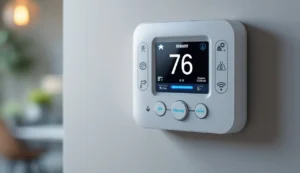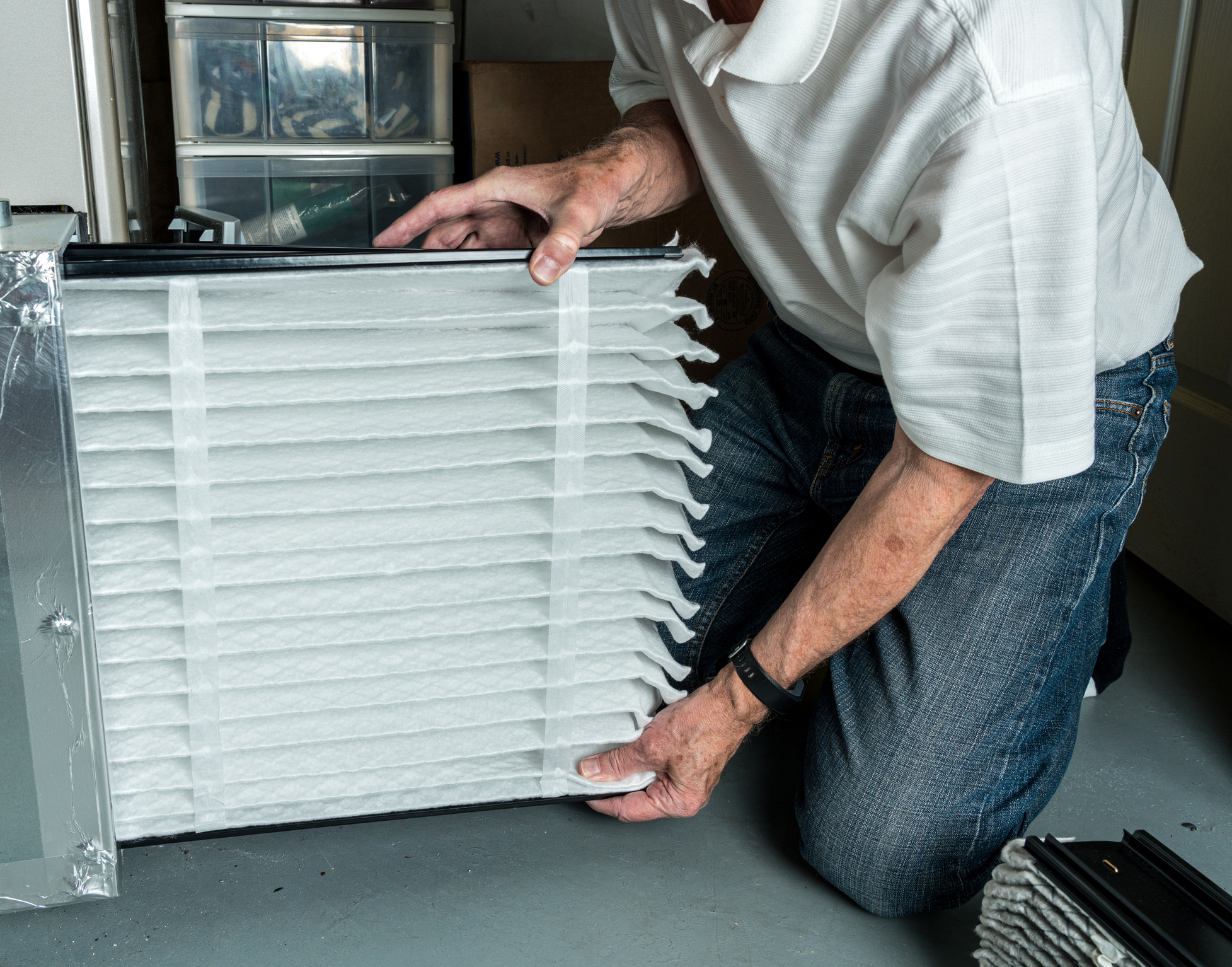Finding the best temperature for your home in Pennsylvania can be difficult. The climate in this state swings from frigid winters to hot, humid summers. By choosing the best home temperature, Pennsylvania residents like you can find the right balance between coziness and cost savings. Let’s look at the ideal thermostat setting in PA for each season, along with tips for improving energy efficiency.
Best Thermostat Settings in Pennsylvania
What feels comfortable in January will not work in July. To maintain both comfort and efficiency, you’ll need to adjust your thermostat based on outside conditions and your household’s daily routine.
Ideal Winter Temperature
The winter home temperature in PA plays a significant role in how high your heating bills climb. Energy experts recommend keeping your thermostat at 68°F when you’re home and awake. This temperature is warm enough to keep your living space comfortable while still conserving energy.
When you’re asleep or away from home, lowering the thermostat to between 60°F and 62°F can significantly reduce heating costs without sacrificing comfort. You can also use programmable or smart thermostats to automate these changes. For example, you might set the temperature lower overnight and schedule it to warm up again just before you wake up.
It’s worth noting that Pennsylvania winters can bring prolonged cold snaps. If temperatures outside drop well below freezing, you’ll want to avoid setting your thermostat too low, as this could risk frozen pipes. Instead, keep adjustments moderate and consistent. Proper insulation and sealed windows will make it easier to maintain your chosen setting.

Ideal Summer Temperature
Finding the summer thermostat setting for Pennsylvania requires balancing comfort against rising cooling costs. Experts tend to recommend setting your thermostat to 78°F while you’re home. This level keeps your living spaces tolerable without overburdening your air conditioner.
If you plan to be away for several hours, raising the thermostat to between 82°F and 85°F is a good way to save energy. This prevents the system from cooling an empty home while still keeping indoor temperatures from climbing too high.
Humidity also plays a big role in Pennsylvania summers. Since high humidity can make a room feel warmer than it actually is, you may feel more comfortable pairing your thermostat setting with ceiling fans or a whole-home dehumidifier. Air circulation helps your body feel cooler, which can reduce the urge to lower the thermostat further. Sticking to consistent settings during the summer can reduce strain on your cooling system and help extend its lifespan.
Ideal Temperature for Sleep
Temperature not only affects daytime comfort; it also impacts sleep quality. Studies suggest that most people sleep best in a cooler environment. For Pennsylvanians like you, the ideal thermostat setting for sleep falls between 60°F and 67°F.
Cooling your bedroom encourages your body to naturally lower its core temperature, which signals that it’s time to rest. During hot summer nights, running your air conditioner at a slightly lower setting or using a dehumidifier in the bedroom can make a big difference in how rested you feel the next day.
In winter, you may prefer to keep the thermostat around 65°F and add blankets or heavier bedding. This allows your heating system to run less often without making you uncomfortable. Test temperatures within this range to find what helps you fall asleep faster and sleep through the night.
How to Save Energy with Thermostat Adjustments
While setting the ideal thermostat temperature helps, knowing how to use your thermostat strategically can help you save even more. Small adjustments add up to big reductions in your monthly utility bills.
For instance, adjusting your thermostat by one or two degrees can lower energy use by up to 3% over time. If you get into the habit of lowering the thermostat when you leave the house, you’ll avoid heating or cooling rooms that no one uses. Installing a programmable thermostat makes this process effortless. You can schedule settings based on your daily routine, and some smart models even learn your patterns automatically.
It also helps to think about your thermostat in relation to other energy-saving practices. Using ceiling fans in the summer, keeping blinds open on sunny winter days, and sealing drafts around doors or windows allow you to stay comfortable without overworking your system. The key is consistency. Stick to recommended settings and pair them with energy-efficient habits to keep your bills under control.
Factors That Affect the Best Home Temperature in PA
The best home temperature you choose can vary based on more than the season. Several personal and household factors influence what feels comfortable.
The age and efficiency of your HVAC system matter a lot. An older furnace or air conditioner may struggle to hold temperatures steady, forcing you to adjust your thermostat more often. Upgrading to a modern, high-efficiency system allows for more precise temperature control.
Your home’s insulation and layout also play a role. Poorly insulated homes in Pennsylvania tend to lose heat quickly in winter and absorb heat in summer, making thermostat adjustments less effective. Adding insulation or upgrading windows helps keep indoor temperatures stable.
Even lifestyle factors matter. If your family spends a lot of time in one or two rooms, focus your comfort settings on those rooms instead of the entire house. On the other hand, if you use every room regularly, zoning systems can help you balance temperatures across your living space by fine-tuning thermostat settings that work for your household.
Comfort vs. Energy Savings: Striking the Balance
The challenge most Pennsylvania homeowners face is finding the middle ground between personal comfort and energy savings. While keeping your home at 72°F year-round might feel ideal, it would also lead to sky-high bills. On the other hand, extreme energy-saving tactics could leave your household shivering in winter or sweating through the summer.
The best approach is to aim for recommended ranges and adjust slightly based on your family’s preferences. For example, you might keep the thermostat at 68°F during the day in winter but drop it to 65°F when everyone goes to bed. In summer, you could keep the thermostat at 78°F during the day but use ceiling fans to make rooms feel cooler.
It’s also important to communicate with your family members about temperature preferences. By working together to find settings that everyone can tolerate, you will avoid constant adjustments that waste energy. Ultimately, the right thermostat setting allows you to stay comfortable while keeping monthly expenses manageable.
Get Year-Round Comfort in Pennsylvania with Dowd Heating & Air Conditioning
Finding the ideal thermostat setting in PA is easier when your HVAC system runs efficiently. Whether you want to save on winter heating bills or stay cool during the summer, Dowd Heating & Air Conditioning can help. Our team specializes in maintenance and energy-efficient upgrades that fit Pennsylvania’s unique climate. Since 1997, we’ve been helping families across the state achieve comfort and savings all year long.
If you’re ready to optimize your home’s comfort and efficiency, reach out to Dowd Heating & Air Conditioning today.




